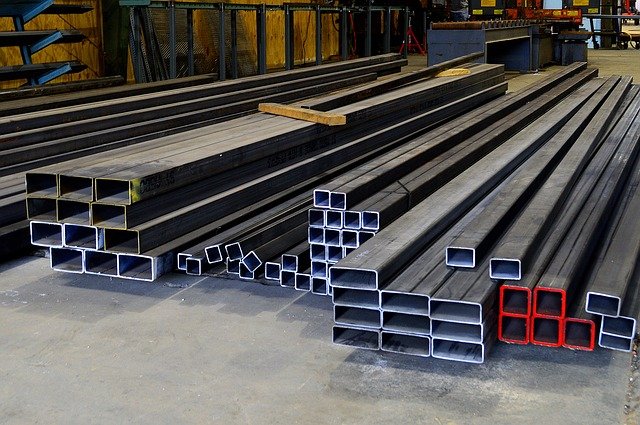The popularity of steel plates in North America is rampant due to their many functions and uses.
Steel plates offer longevity and structure in various applications which range from building bridges and roads, reinforcing structures, building and moving heavy machinery, and for use in stadiums.
Stainless Steel distributors such as Alloy Metals offer various options in materials such as titanium, aluminum, and nickel alloys.
There are several variations in which stainless steel can be manipulated. Steel plates are used in electronic devices such as circuit boards and as laminates and a whole wide range of functions. The various functions of steel plates ensure they can be calibrated in different sizes, structures, and casting systems.
Steel plates come with different thicknesses, widths, and lengths which vary depending on the function and usage. For instance, the use of steel plates on road requires a specific thickness and mass that ensures the functionality is used properly. Steel plates are durable and for use in non-toxic environments.
Steel plate manufacturing
The manufacture of steel plates ensures that they are crystallized through melting or heating. This ensures that the material is burned or homogenized without getting rid of any unwanted impurities.
The presence of chromium in steel plates makes up for around 10%, which gives its beneficial qualities. For instance, the steel plates can bring about a passive layer that ensures the product is stainless and able for use.
Steel plates are hot rolled and made into coils in customer-friendly sizes. This ensures that the material is cut, hot rolled, and annealed to make them sturdy and less brittle to the touch. The hot rolling is done at a temperature of over 1700 degrees which ensures its recrystallization.
After heating, the steel plates are thereafter rolled into sheets after the layers are compressed and divided into the desired dimensions. Cold rolling can also be considered and achieved by manipulating the stainless steel rollers through thinner rollers which are rolled to come into the desired thickness.
Different types of steel are better suited for certain applications. Therefore, the process of manufacturing hugely depends on the application and function of the steel plate.
Stainless steel plates play a large part in industrial manufacturing such as building, aerospace manufacturing, chemical processing, or pipelines. The configuration of steel plates allows for various uses and is functional for both brittle and harsh conditions.
Qualities of steel plates
Steel plates are resistant to rust and corrosion as they are not able to wear and tear easily. Harsh environments do not affect the functionality of steel plates, as they can function even in harsh conditions that do not favor them.
The tensile strength of steel plates also ensures they are durable and long-lasting, offering the lasting benefits of the material.
The high ductility ensures that the plates can be fashioned into sturdy and manageable pieces that serve the intended purpose.
Steel plates have a high impact and heat resistance, for them to be manipulated into various functions. These functions ensure they are capable of configuration to various uses and manipulated to suit different needs.
Steel plates also offer longevity and hardness to the user. The sturdiness and strength ensure that the products can be configured to different structures and used in a wide range of uses.
The overall and gauge thickness of steel plates ensure the configurations are considered in great regard. The thickness levels are considered based on the functionality of the product, as well as the result.
The overall width and length of the steel plates will also determine their functionality and usage. For instance, the longer and wider the plate is, the more the plate is properly aligned.
Trending information
The latest trends in steel plate manufacturing coupled with the latest trends and technology have led to the development of substantial products which have advantages thereby raising economic shifts and considerations.
Manufacturers and distributors therefore required to evolve with the changing markets and preferences that ensure the market is met with anticipation. By keeping up with industry trends and requirements, they will be able to anticipate the market trends and patterns that ensure consumers purchase these products.
With an efficient and knowledgeable strategy, the distributors and manufacturers can plan and set the pace depending on the market requirements and needs. This will also seek to get an edge over competitors and focus on the beneficial aspects of the industry.
The economic shifts have also changed the steel plate industry by enabling key market players to understand strategies in marketing, By doing so, they can predict patterns and set the pace for future investment and involvement.
The revenue contribution will then grow as a result of the economic changes. These will ensure that the industry keeps up with the growing pace necessary for development and advancement.
The rapid urbanization has led to the advancement of various steel plates such as the heat-treated steel plates and driven emerging economies into understanding the importance of the product.
The steel plate industry in North America has been met with building interest in large-scale investment in both industrial and infrastructural sectors. This interest has sought to encourage manufacturers and distributors into understanding the various aspects and considerations that seek to change and revolutionize the steel plate industry into innovative forms and pieces.
The extent of product circulation is also a determining factor when it comes to steel plate manufacturing. The sales channel to be used is dependent on the mode of product circulation, which makes this a key factor in sales and distribution.
The effect of Covid-19 has made this industry identify alternative routes of distribution and sales, by driving possible expansion strategies that will aim in curbing restraints that affect the growth of steel plates.
New and prospective buyers are also encouraged to tap into new markets which will open up doors for additional revenue. This ensures that all possible marketing aspects are identified; thereby ensuring distributors and manufacturers have a seat at the table. In doing so, they can stay in tune with the competitive market and enable sustainability.







Recent Comments